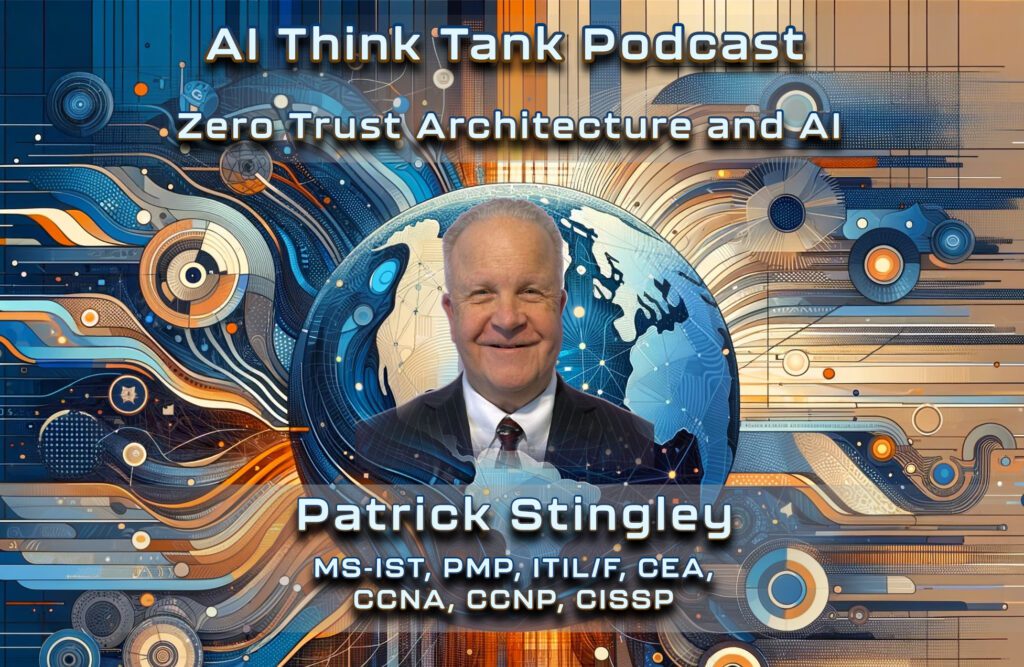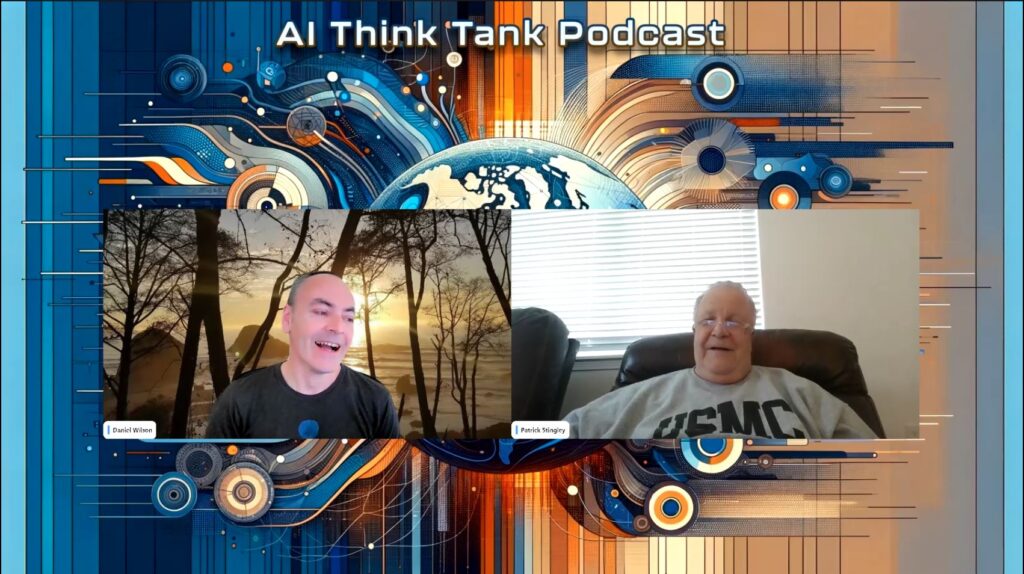Interview with Patrick Stingley

During this very special 6th episode of the AI Think Tank Podcast, I had the honor to speak with Patrick Stingley, a seasoned data scientist and enterprise architect for the U.S. government, currently associated with the Bureau of Land Management. His decades of experience in various sectors of government service have endowed him with an intricate understanding of information technology, particularly within the realm of artificial intelligence (AI) and data security.
A few of Patrick’s certifications and titles at glance: Previous Top Secret / SCI Clearance, Masters Degree (MS-IST), PMP, ITIL/F, CEA, CCNA, CCNP, CISSP, Current PhD Candidate in Artificial Intelligence. He also won the Tech BISNOW Award for Most Innovative in Government 2015. We met through MIT and are both founding members of Info Science AI where we further innovate AI integrations and data solutions
Decades of Transformation in Data Handling
While I knew that it would be impossible to cover his extensive background, awards, and adventures, I did my best to give everyone a glimpse at his outstanding background. I started with having Patrick revisit his extensive career managing significant IT systems, including the passport database system for the State Department.
“I ran the passport database for some years and actually five major systems for the State Department,” Patrick recalled, highlighting the transformation he has witnessed from data processing to what is now recognized as data science due to the emergence of AI technologies.
“I used to work at the situation room a lot of times during national emergencies because I knew how to speak SQL, I knew how to query the database.” Still an irreplaceable asset in any sector.
He later pointed out, “With vector databases, the process of managing or putting data into a vector database is completely unlike any of the data handling that we’ve done up until now.” While they have been around for a very long time, only recently within the last few decades have vector databases gained traction.
Patrick stated “And now the term is data pipeline, because ETL really doesn’t handle that anymore.” This transition from traditional data management techniques to modern AI-driven approaches marks a significant evolution in the field, one that he has been at the forefront of throughout his career.

Challenges and Innovations in Enterprise Architecture
Patrick shared insights into the challenges he faced in implementing enterprise architecture on a grand scale. He mentioned the U.S. government’s vast IT landscape, which he has navigated through roles that required managing thousands of computers and diverse software applications. “Even though I work in a rather small, obscure part of the government, the Bureau of Land Management, we have 14,000 computers [and] 1.4 million unique kinds of software on the network,” he elaborated.
A notable aspect of our discussion was the implementation of low-code and no-code solutions, which Patrick has utilized to improve operational efficiency significantly. He illustrated this by explaining how these approaches allowed for rapid adaptation and deployment of IT services, contrasting sharply with traditional development methods that are often cumbersome and time-intensive.
The Interplay of AI and Security
A significant portion of our dialogue was dedicated to exploring the intersection of AI and security. Patrick explained how AI tools are increasingly utilized to forecast phenomena such as forest growth, a project currently underway in Oregon. This reflects a broader trend where AI capabilities are being integrated into various facets of government operations beyond typical tech-centric agencies.
On the topic of security, Patrick provided a detailed account of his efforts to architect a zero-trust security model within his bureau. He stressed the importance of this framework in today’s IT environment, where traditional perimeter-based security models fall short in protecting against sophisticated cyber threats. Patrick’s approach involves stringent access controls and robust monitoring systems to ensure the integrity and security of the government’s extensive network infrastructure.
Conclusion and Reflections
As we wrapped up our conversation, it was clear that Patrick’s contributions to the field of IT and his forward-thinking approaches to data science and security are both profound and impactful. His experiences underscore the significant shifts in technology and methodology over the past decades, highlighting the continuous need for adaptation and innovation within the field of data science and AI.
As always, it was enlightening to delve into these topics with someone who has not only observed but also shaped the evolution of these technologies within the government sector. Patrick’s stories and insights serve as a valuable resource for understanding the complexities and challenges of integrating AI and security measures in large-scale IT operations. Everyday I feel extremely fortunate to have Patrick as a friend, a mentor, and fellow developer.
Join us as we continue to explore the cutting-edge of AI and data science with leading experts in the field.
Subscribe to the AI Think Tank Podcast on YouTube.
Would you like to join the show as a live attendee and interact with guests? Contact Us

